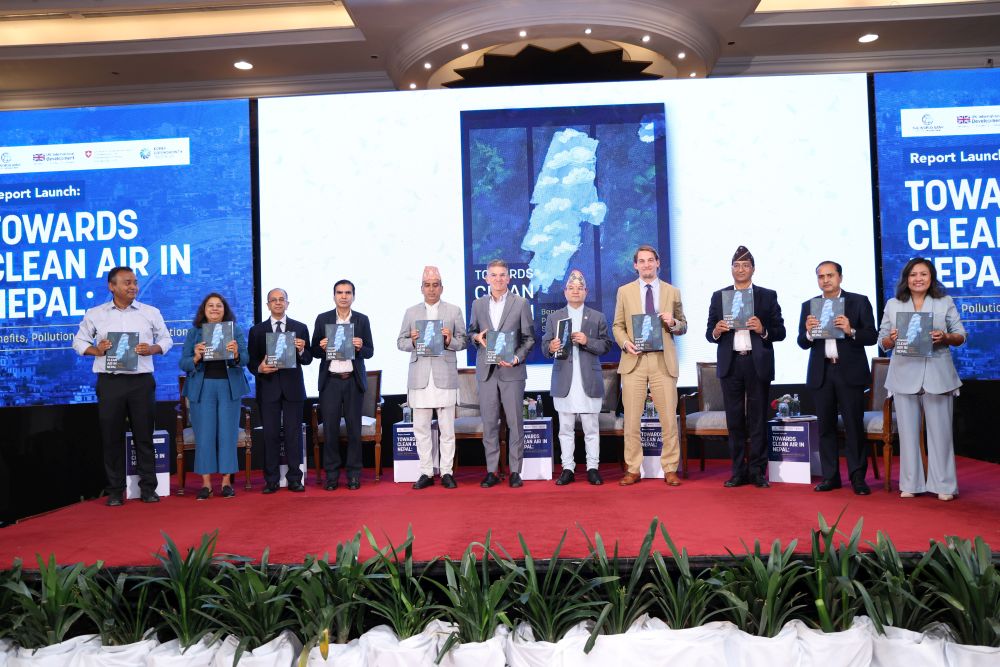Air Pollution Remains Nepal’s Top Health Risk, Says World Bank Report

Kathmandu – Air pollution is the leading risk factor for death and disability in Nepal, according to a new World Bank report that urges a comprehensive, cross-sectoral approach to tackle the country’s chronic air quality challenges. The report, Towards Clean Air in Nepal: Benefits, Pollution Sources, and Solutions, highlights the need for coordinated public policy and investment strategies that prioritize cost-effective, multi-sector solutions to address the worsening air pollution crisis.
The assessment covers air pollution across Nepal and the broader airshed of the Indo-Gangetic Plain and Himalayan Foothills (IGP-HF), providing the most detailed overview to date. It identifies the Kathmandu Valley and the Terai as Nepal’s most polluted regions, where air quality has shown little improvement over the past decade. The report warns that poor air quality shortens life expectancy for the average Nepali by 3.4 years and causes around 26,000 premature deaths annually. The economic toll is equally severe, with the cost of air pollution estimated to exceed 6 percent of Nepal’s Gross Domestic Product (GDP) each year, due to its negative effects on public health, labor productivity, tourism, and aviation.
“Clean air and economic growth are not in conflict. In fact, the cost of inaction on pollution is far greater than the cost of taking bold steps today,” said Ain Bahadur Shahi Thakuri, Minister for Forests and Environment. He emphasized the government’s commitment to interventions such as stricter industrial emission standards and the promotion of electric transportation to reduce air pollution.
The report outlines key areas where targeted interventions are urgently needed. Electrifying vehicle fleets, cars, motorcycles, buses, and trucks, is described as critical. This must be complemented by stronger vehicle inspection and maintenance systems and efforts to reduce road dust. In the industrial sector, cleaner technologies and fuels, including electric and pellet-based boilers, are essential for reducing emissions from small and medium enterprises, as well as from high-emission facilities like brick kilns and cement factories.
Household air pollution also remains a major contributor. Promoting clean and preferably electric cooking solutions is identified as a priority, given the widespread use of biomass-fueled stoves that contribute to both indoor and outdoor pollution. Forest fire prevention is another vital area, with recommendations for reducing fuel load in forests, raising public awareness, and improving fire response systems.
Given Nepal’s geography and its location within a shared regional airshed, the report stresses the importance of regional cooperation to address transboundary pollution. Air pollutants originating outside Nepal, particularly in the Indo-Gangetic Plain, can travel long distances and accumulate in areas like the Kathmandu Valley, which is especially vulnerable due to its bowl-shaped topography.
David Sislen, World Bank Country Director for Maldives, Nepal, and Sri Lanka, reaffirmed the institution’s commitment to supporting Nepal’s clean air agenda. “The World Bank is committed to helping Nepal strengthen its air quality improvement programs by leveraging financial and technical assistance and capacity-building support,” he said. “As a steadfast champion of clean air for better health and prosperity, the World Bank continues to tap into its extensive knowledge and experience from around the world to ensure that our efforts to support cleaner air in Nepal are impactful and sustainable.”



